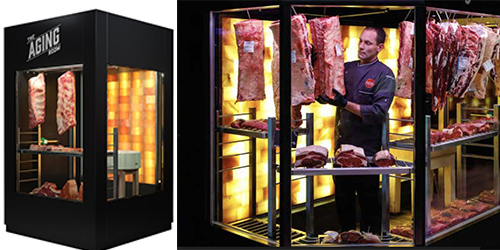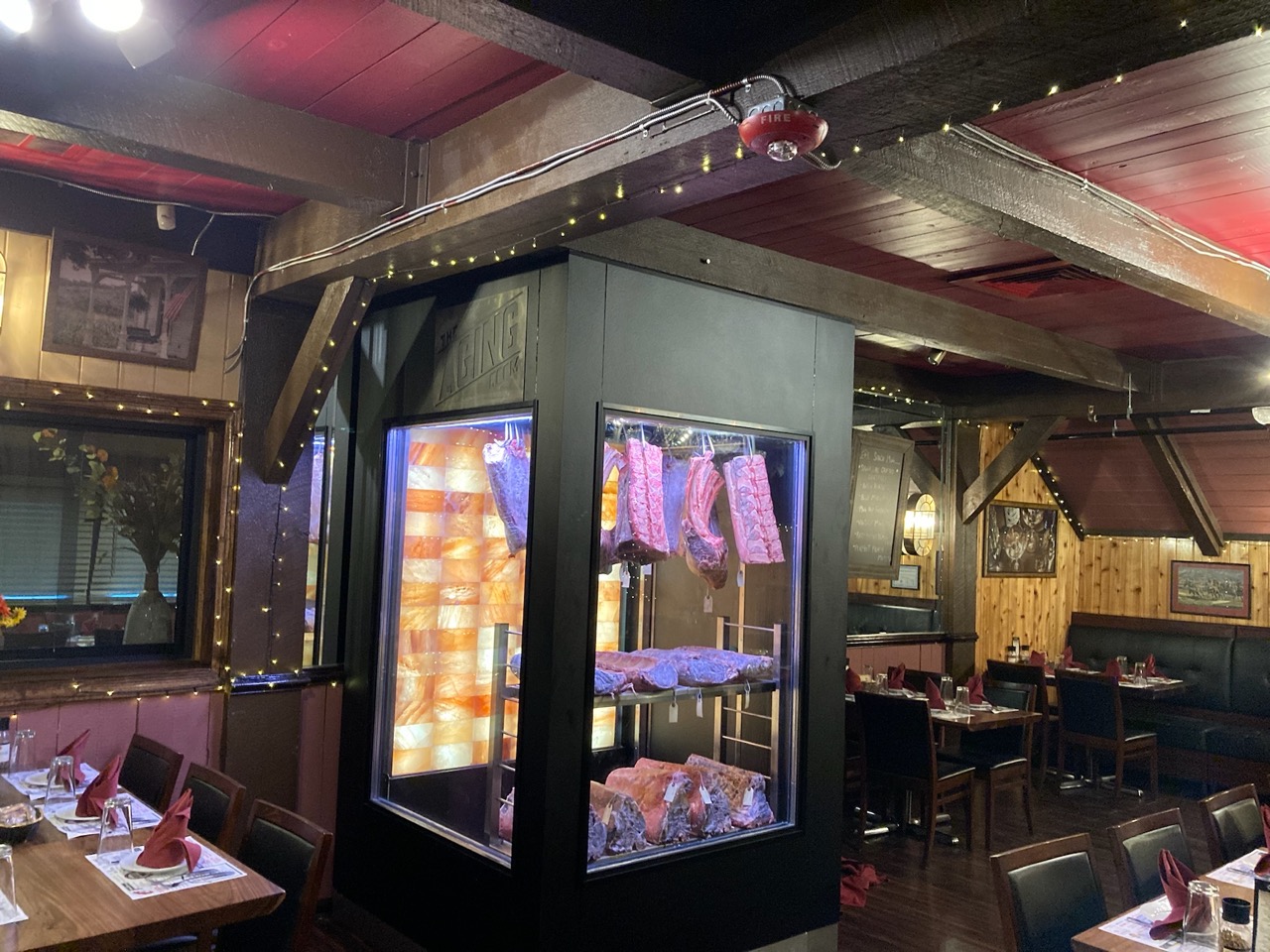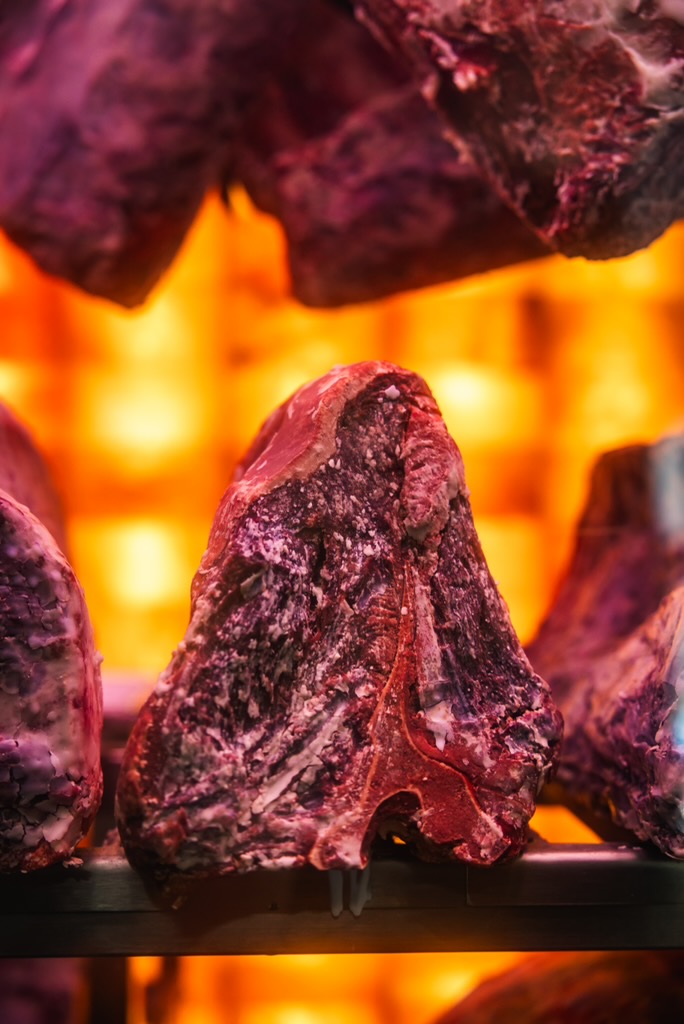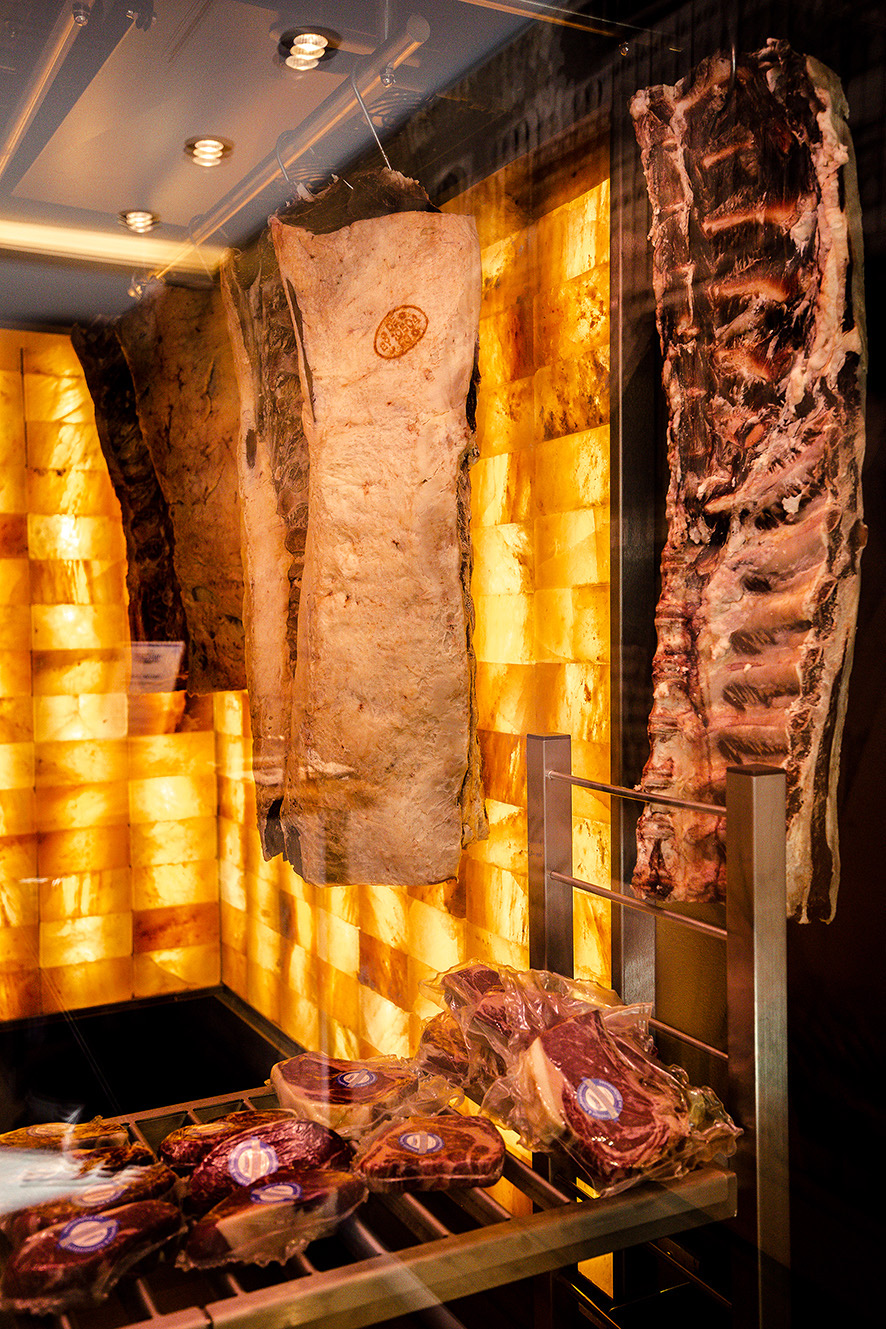
How Dry Aging Works
How Dry Aging Works
Dry-aging significantly improves the taste and tenderness of the meat.
During the dry-aging process, moisture is drawn out of the beef and redistributed through the beef. This creates a dense beef flavor with nutty and rich notes. The dry-aging process also causes the natural enzymes to break down which makes the beef even more tender. In order to achieve the right tenderness and flavor without compromising the integrity of the meat, it’s important to maintain the right temperature, humidity, and ventilation levels.
Determining the Taste and Tenderness of Dry-Aged Beef
To measure the tenderness, objective results can be obtained with sheer force measurements like the Kramer shear-cell or the Warner-Bratzler shear force device, or penetration measurements like Instron devices.
For taste, beef falls into three categories: metallic, sour, and umami. Metallic is when it’s been prepared fresh and sour is more characteristic for wet-aging. Umami means yummy or savoury in Japanese. It is a rich and mouth watering flavor that can be achieved with dry-aging.
The Dry-Aging Process
For the best results from dry-aging, you’ll want to age beef based on the type of meat. For example, to achieve the optimal taste for young beef, it needs to dry-age for 4 weeks while old beef needs 7 to 8 weeks. Use our interactive diagram below to see how changing the amount of time in a premium meat ager changes the tenderness and taste of the beef.
Achieve Optimal Results
When it comes down to it, how long you decide to dry age beef depends entirely on what kind of flavor you’re trying to achieve. We have seen some butcheries age beef over 200 days. You can also play with the process, like lowering the temperature in the premium meat ager and lengthening the aging process to increase the intense taste. Ultimately, it should always be about your customers’ tastes. While some people might like a more intense flavor, others may not, which is why we always identify the optimal time for aging for that perfect in-between. Not too intense, not too mild, but just the right balance.
Other news
-
 News
Why Full-System Certification Matters in Dry Aging Equipment — And What Sets The Aging Room® Apart
18 Jul 2025
News
Why Full-System Certification Matters in Dry Aging Equipment — And What Sets The Aging Room® Apart
18 Jul 2025
-
 News
Understanding the Art of Aging: How Dry Aging with Himalayan Salt Transforms Meat Quality
01 Jul 2025
News
Understanding the Art of Aging: How Dry Aging with Himalayan Salt Transforms Meat Quality
01 Jul 2025
-
 News
UV Light vs. Himalayan Salt in Dry Aging Meat: What Really Matters for Flavor and Quality
03 Jun 2025
News
UV Light vs. Himalayan Salt in Dry Aging Meat: What Really Matters for Flavor and Quality
03 Jun 2025